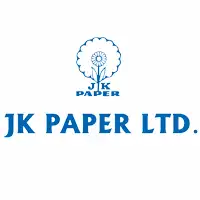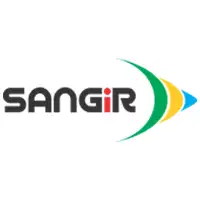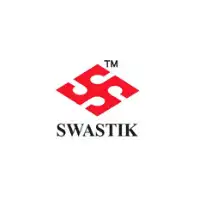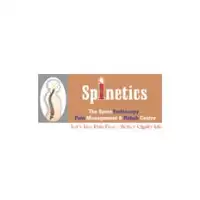Cost of Poor Quality (COPQ) is a measure of the cost incurred due to poor quality products or services. It includes both the cost of preventing defects and the cost of dealing with defects that do occur.
Let's take an example of a manufacturing company that produces computer components. If the components are not properly tested, defects may arise, causing the components to malfunction, and resulting in returns or warranty claims from the customers.
The COPQ in this scenario includes the cost of:
- Scrapped components: If defective components are identified during the production process, they may need to be scrapped, which incurs a cost to the company.
- Reworking components: If defects are identified during testing, the components may need to be reworked, which also incurs a cost to the company.
- Warranty claims: If the components are defective and fail after being sold to customers, the company may need to pay for warranty claims, which can be costly.
- Customer returns: Defective products may also result in customer returns, which can lead to loss of customer trust and reputation.
- Loss of future business: Poor quality products can lead to lost business opportunities, as customers may switch to other companies that provide better quality products.
By properly identifying and reducing the causes of poor quality, a company can reduce COPQ and improve profitability.
How is COPQ (cost of poor quality) calculated?
To calculate the Cost of Poor Quality (COPQ), you need to consider both the cost of preventing defects and the cost of dealing with defects. There are different methods to calculate COPQ, but one common approach is to divide it into four categories:
- Internal failure costs: These are the costs incurred due to defects that are identified before the product or service is delivered to the customer. Examples of internal failure costs include rework, scrap, and downtime.
- External failure costs: These are the costs incurred due to defects that are identified after the product or service is delivered to the customer. Examples of external failure costs include warranty claims, product recalls, and customer returns.
- Appraisal costs: These are the costs incurred to identify defects in the products or services before they are delivered to the customer. Examples of appraisal costs include inspection, testing, and quality audits.
- Prevention costs: These are the costs incurred to prevent defects from occurring in the first place. Examples of prevention costs include training, process improvements, and quality planning.
To calculate COPQ, you need to sum up the costs from each category. The formula for calculating COPQ is:
COPQ = Internal failure costs + External failure costs + Appraisal costs + Prevention costs
By calculating COPQ, a company can identify the areas where it needs to improve its quality processes and reduce costs.
How do you calculate the cost of poor-quality COPQ in Excel?
o calculate the Cost of Poor Quality (COPQ) in Excel, you can use the following formula:
=C2+D2+E2+F2
Where C2 represents the internal failure costs, D2 represents the external failure costs, E2 represents the appraisal costs, and F2 represents the prevention costs.
You can adjust the formula to match the cell references in your own spreadsheet. Make sure to include all relevant costs in each category, and double-check your formula to ensure accuracy.
Once you have calculated your COPQ, you can use this information to identify areas where quality can be improved and costs can be reduced. This can help your business become more efficient and profitable in the long run.
Read Blog on : Key principles of lean six sigma
How to Reduce COPQ? ( Cost of Poor Quality)
Reducing the Cost of Poor Quality (COPQ) is important for businesses to increase profits and improve customer satisfaction. Here are some steps that businesses can take to reduce COPQ:
- Improve Quality Planning: A robust quality plan helps to identify and mitigate potential quality issues before they occur. By investing in quality planning, businesses can avoid costly rework and scrap expenses.
- Invest in Training: Investing in employee training can help improve product quality and reduce the risk of errors. By providing employees with the necessary skills and knowledge to perform their jobs effectively, businesses can improve quality and reduce costs associated with mistakes.
- Implement Continuous Improvement: Continuous improvement involves identifying areas for improvement and making incremental changes to processes, systems, and products. By continuously improving quality, businesses can reduce defects and improve efficiency.
- Use Quality Metrics: By measuring quality performance with metrics, businesses can identify areas where quality is lacking and make changes to improve quality.
- Implement Quality Controls: Quality controls are procedures that ensure products or services meet quality standards. By implementing quality controls, businesses can reduce the risk of defects and improve customer satisfaction.
- Analyze Customer Feedback: Analyzing customer feedback can help businesses identify quality issues and make improvements to products or services. This can help reduce the cost of warranty claims and customer returns.
- Build Quality into the Supply Chain: By building quality into the supply chain, businesses can reduce the risk of defects from suppliers. This can help reduce costs associated with rework and scrap.
We can use below standard methodologies for root cause and corrective action.
what tools or method can be used for reducing cost of poort quality
here are several tools and methods that businesses can use to reduce the Cost of Poor Quality (COPQ). Some of these tools and methods include:
- Six Sigma: Six Sigma is a data-driven approach to quality improvement that focuses on identifying and eliminating defects in a process. By using statistical tools and techniques, businesses can reduce variability in their processes and improve quality.
- Total Quality Management (TQM): TQM is a management philosophy that focuses on continuous improvement in all aspects of an organization. By involving all employees in quality improvement initiatives, TQM can help reduce defects and improve customer satisfaction.
- Lean Manufacturing: Lean Manufacturing is an approach to process improvement that focuses on eliminating waste and improving efficiency. By using tools such as value stream mapping and just-in-time inventory management, businesses can reduce costs associated with poor quality.
- Root Cause Analysis: Root Cause Analysis is a problem-solving technique that helps identify the underlying causes of quality issues. By addressing the root cause of a problem, businesses can prevent similar issues from occurring in the future.
- Failure Modes and Effects Analysis (FMEA): FMEA is a systematic approach to identifying potential failures in a process and determining their impact. By using FMEA, businesses can identify potential quality issues and take steps to prevent them from occurring.
- Statistical Process Control (SPC): SPC is a method of monitoring a process to detect and control variation. By using statistical tools and techniques to monitor a process, businesses can identify and address quality issues before they become costly problems.
By using these tools and methods, businesses can reduce COPQ and improve profitability by improving quality, reducing waste, and increasing efficiency.
FAQs:
Here are some frequently asked questions (FAQ) about the Cost of Poor Quality (COPQ) and their answers in detail:
Q: What is the Cost of Poor Quality?
A: The Cost of Poor Quality (COPQ) is a measure of the financial impact of poor quality in a product or service. It includes the cost of internal and external failures, appraisal, and prevention activities.
Q: What are internal and external failures?
A: Internal failures are defects that are detected before a product is shipped to the customer. External failures are defects that are detected after a product has been shipped to the customer.
Q: What is an appraisal cost?
A: Appraisal costs are the costs associated with inspecting or testing a product to ensure it meets quality requirements.
Q: What is a prevention cost?
A: Prevention costs are the costs associated with preventing defects from occurring in the first place. This includes activities such as training employees, implementing quality management systems, and improving processes.
Q: How is COPQ calculated?
A: COPQ is calculated by adding the costs of internal and external failures, appraisal costs, and prevention costs. The formula for COPQ is: COPQ = Internal Failures + External Failures + Appraisal Costs + Prevention Costs.
Q: Why is it important to reduce COPQ?
A: Reducing COPQ can help businesses improve profitability by reducing the costs associated with poor quality, such as scrap, rework, warranty claims, and customer returns. It can also improve customer satisfaction and increase brand loyalty.
Q: What are some tools and methods for reducing COPQ?
A: Some tools and methods for reducing COPQ include Six Sigma, Total Quality Management (TQM), Lean Manufacturing, Root Cause Analysis, Failure Modes and Effects Analysis (FMEA), and Statistical Process Control (SPC).
Q: How can businesses prevent COPQ from occurring in the first place?
A: Businesses can prevent COPQ from occurring by investing in quality planning, employee training, continuous improvement, quality controls, and building quality into the supply chain. They can also analyze customer feedback and use quality metrics to identify areas where quality is lacking and make changes to improve quality.
Q: How can businesses measure the effectiveness of their efforts to reduce COPQ?
A: Businesses can measure the effectiveness of their efforts to reduce COPQ by tracking metrics such as defect rates, customer complaints, and warranty claims. They can also conduct regular audits and use tools such as Six Sigma to identify and eliminate sources of variation in their processes.
Read More :
- Continual Improvement
- Analytical approach to solve problem
- cost of quality Vs cost of poor quality
- SMED
- Dangers of not implementing lean manufacturing
Our Clients


























































